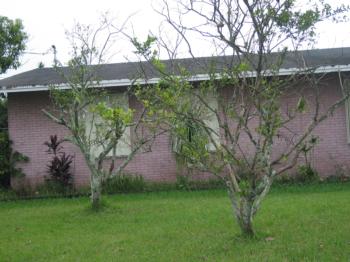What am I looking for?
What does the insect look like?
The Asian citrus psyllid adult is tiny - the size of an aphid. The wings are brown along the edge, with a clear gap along the back edge. The psyllid feeds with its rear end tilted up at a 45o angle, making the insect appear almost thorn-like on leaves and stems. The tilted body and wing pattern is unique to this pest.
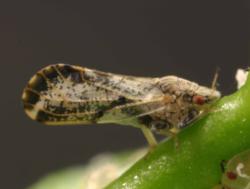
Juveniles (nymphs) produce white, waxy tubules and are always found on new leaf growth or young stems. The waxy tubules are unique to this pest.
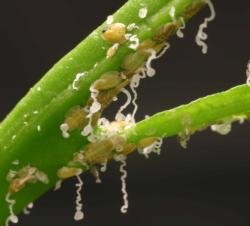
The eggs of the Asian citrus psyllid are yellow-gold and are found on the newest leaf growth, nestled among unfolded leaves. They are tiny and hard to see without a hand lens.
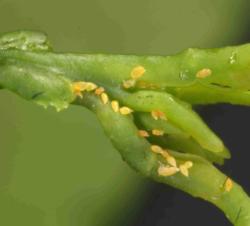
What does the disease look like?
It can take several months to upward of a year for infected trees to start showing symptoms of huanglongbing. The first symptom, and the most important one to watch for, is yellowed leaves. However, citrus trees often have yellow leaves because of nutritional deficiencies so its important to know the difference. Nutrient deficiency causes a similar pattern of yellowing on both sides of the leaf. HLB causes blotchy yellow mottling and is not the same on both sides of the leaf.
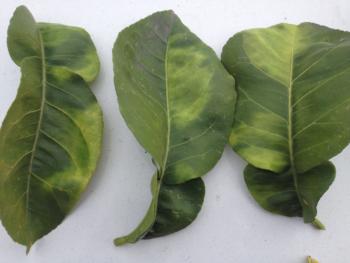
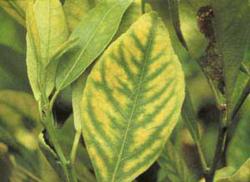
Later, symptoms of HLB include lopsided, small fruit, bitter juice and excessive fruit drop. Eventually the tree will stop producing fruit and die.
